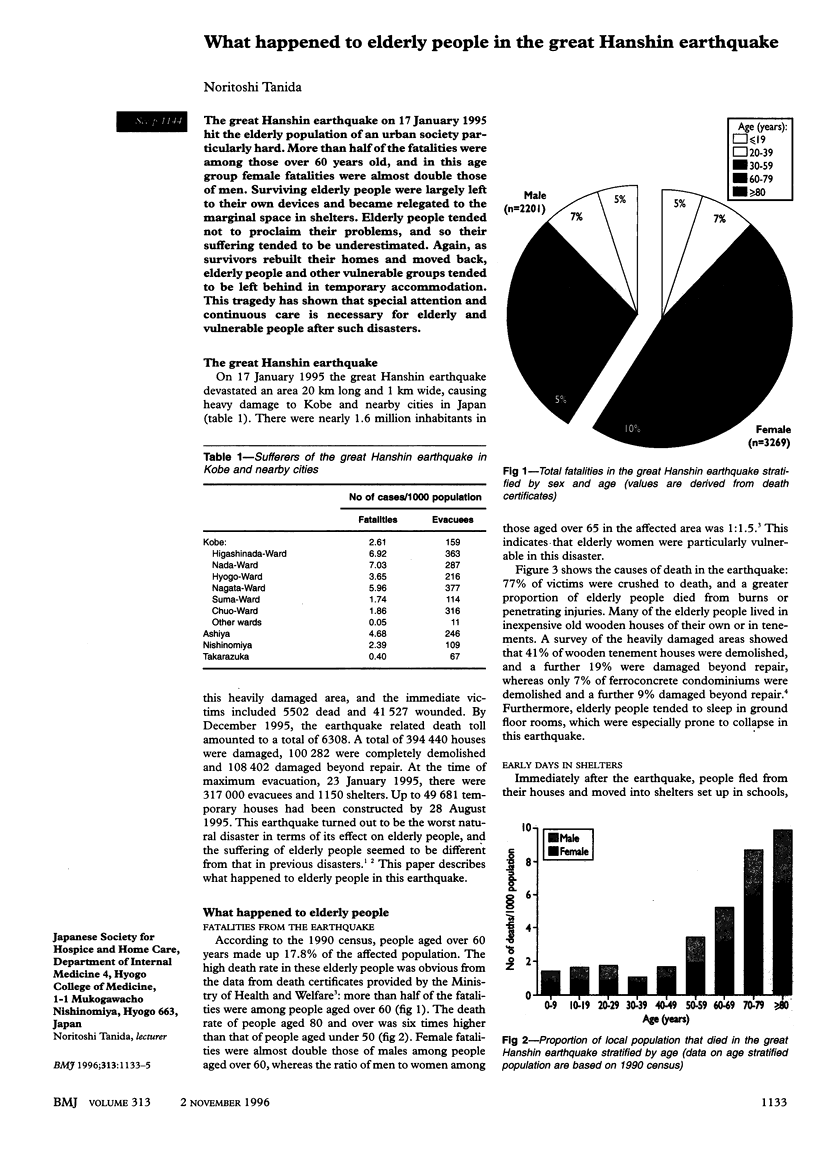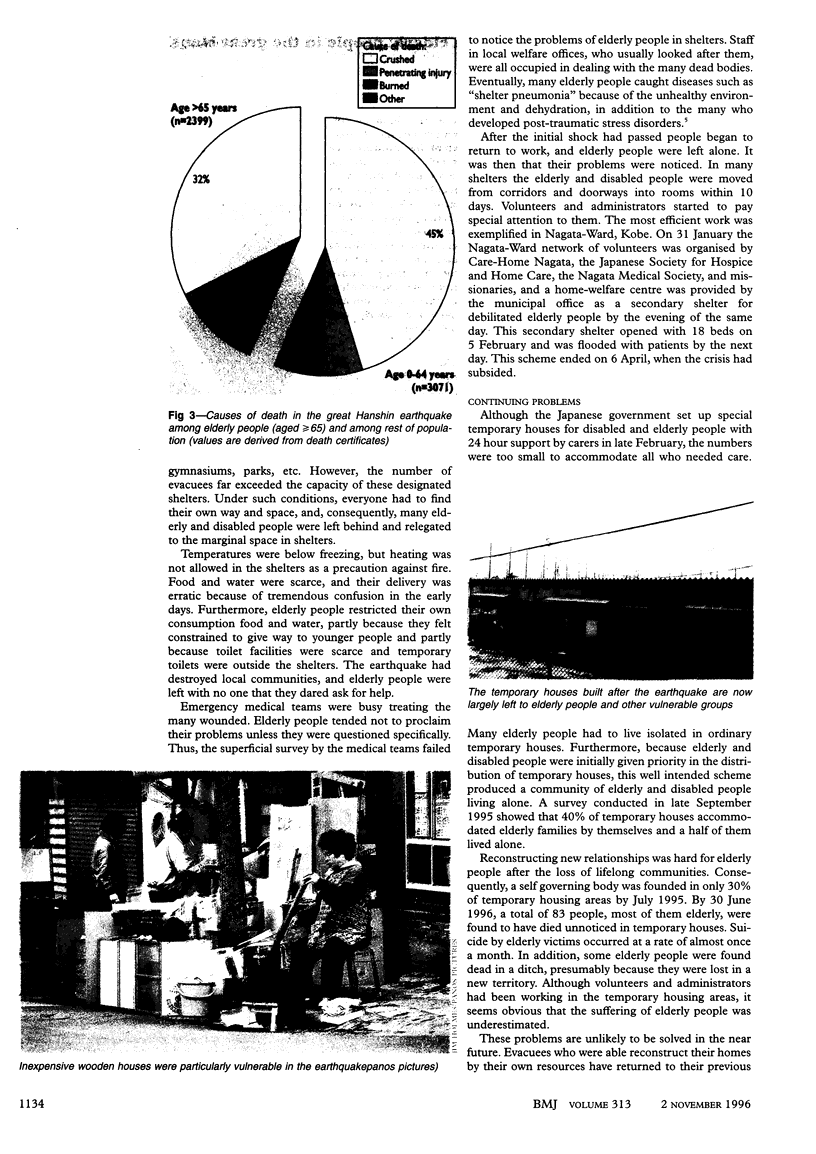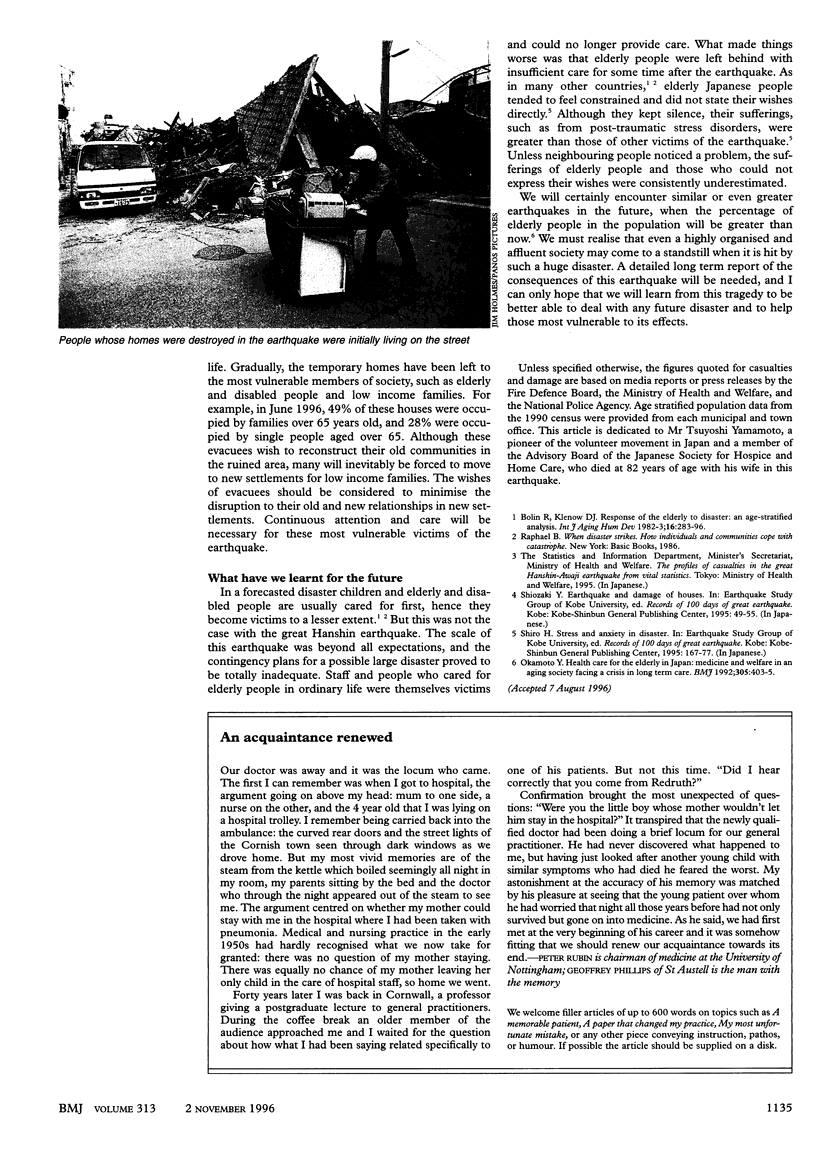Abstract
The great Hanshin earthquake on 17 January 1995 hit the elderly population of an urban society particularly hard. More than half of the fatalities were among those over 60 years old, and in this age group female fatalities were almost double those of men. Surviving elderly people were largely left to their own devices and became relegated to the marginal space in shelters. Elderly people tended not to proclaim their problems, and so their suffering tended to be underestimated. Again, as survivors rebuilt their homes and moved back, elderly people and other vulnerable groups tended to be left behind in temporary accommodation. This tragedy has shown that special attention and continuous care is necessary for elderly and vulnerable people after such disasters.
Full text
PDF


Images in this article
Selected References
These references are in PubMed. This may not be the complete list of references from this article.
- Bolin R., Klenow D. J. Response of the elderly to disaster: an age-stratified analysis. Int J Aging Hum Dev. 1982;16(4):283–296. doi: 10.2190/mqeg-yn39-8d5v-wkmp. [DOI] [PubMed] [Google Scholar]
- Okamoto Y. Health care for the elderly in Japan: medicine and welfare in an aging society facing a crisis in long term care. BMJ. 1992 Aug 15;305(6850):403–405. doi: 10.1136/bmj.305.6850.403. [DOI] [PMC free article] [PubMed] [Google Scholar]





